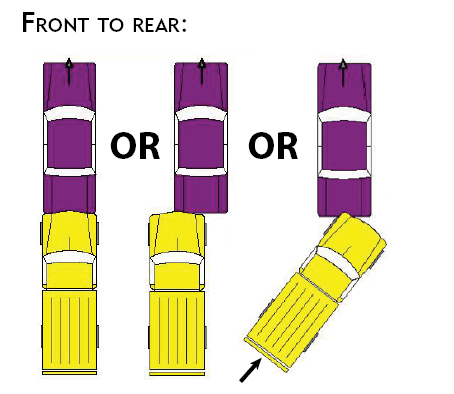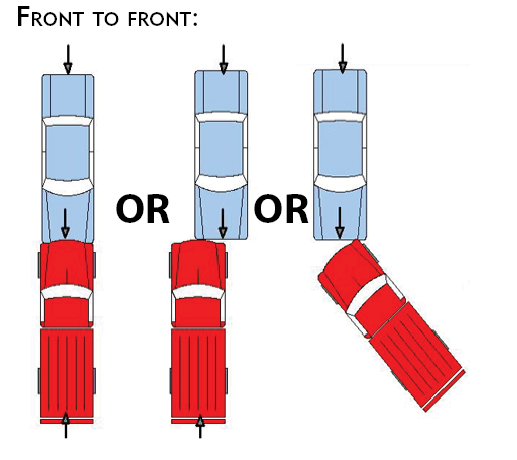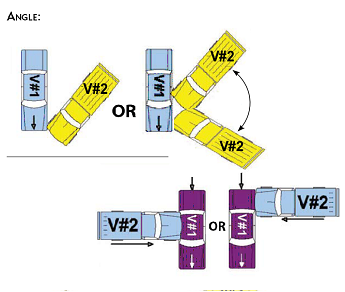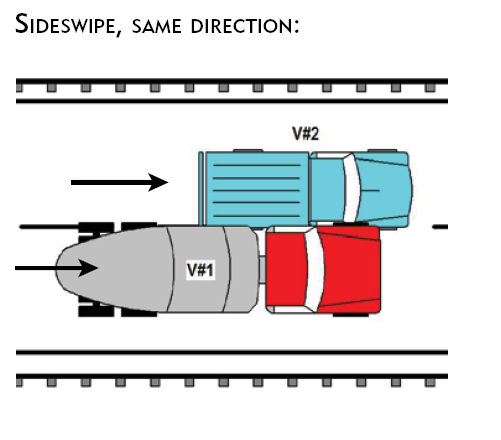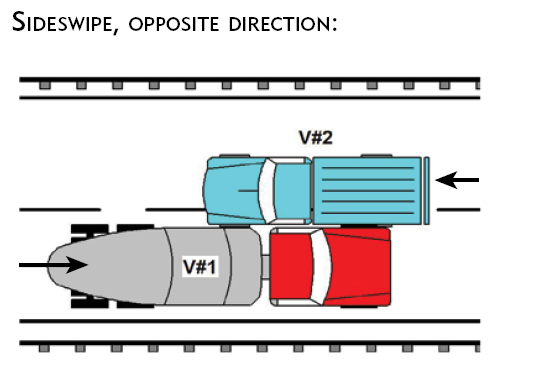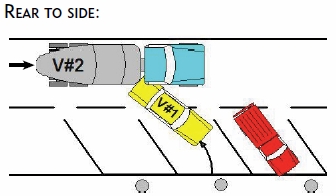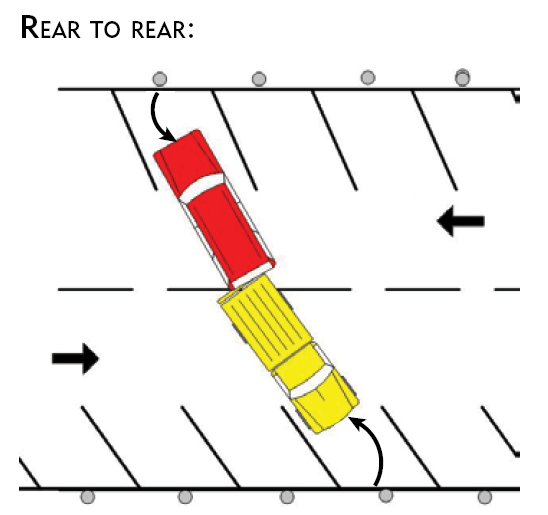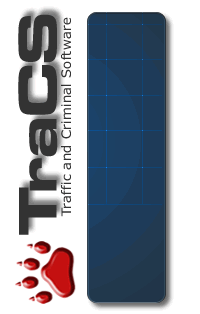
|
Manner of Collision Impact
|
FIELD 32 - MANNER OF COLLISION IMPACT

Indicate the manner in which two motor vehicles in transport initially
came together without regard to the direction of force. This field refers
only to crashes where the first harmful event involves a collision
between two motor vehicles in transport.
00 - Not a Collision with a Motor Vehicle In-Transport is used when
the first harmful event is not an impact between two in-transport motor
vehicles.
01 - Front-to-Rear is used when a collision occurs between the
rear of one vehicle and the front of another vehicle. If this option
is selected, the areas of initial impact for the vehicles involved in
the first harmful event must be front (12) and back (6).
02 - Front-to-Front is used when a collision occurs between the
front end of one vehicle and the front end of another vehicle. If this
option is selected, the areas of initial impact for the vehicles involved
in the first harmful event must both be front (12).
06 - Angle is a crash where two motor vehicles impact at an angle.
For example, the front of one motor vehicle impacts the side of another
motor vehicle. If this option is selected, the areas of initial impact
for the vehicles involved in the first harmful event must not be
front-to-front, front-to-back, back-to-back, or back-to-side.
07 - Sideswipe - Same Direction is used when the sideswipe occurred
while the two vehicles were traveling in the same direction.
08 - Sideswipe - Opposite Direction is used when the sideswipe
occurred while the two vehicles were traveling in opposite directions.
09 - Rear-To-Side is used when a collision occurs between the rear
of one vehicle and the side of another vehicle. If this option is
selected, the areas of initial impact for the vehicles involved in the
first harmful event must be back for one and side for the other.
10 - Rear-To-Rear is used when a collision occurs between the rear
of one vehicle and the rear of another vehicle. If this option is
selected, the areas of initial impact for the vehicles involved in the
first harmful event must both be back.
98 - Other should be used for any collision between two motor
vehicles in-transport where the collision is not described by options
01 through 10, including set-in-motion situations.
Examples include:
-
One vehicle's "end" swipes (endswipe) another vehicle instead of
their "sides" swiping.
-
One vehicle is airborne and makes contact with its front or
undercarriage to the other vehicle's hood or top.
-
Cargo or other load on one motor vehicle in-transport shifts and
lands or is thrown into/onto another vehicle.
-
The tire of one motor vehicle in-transport throws a stone through
the windshield of another vehicle.
-
A vehicle occupant or motorcyclist falls or is thrown from a
vehicle striking or is struck by another vehicle.
99 - Unknown is used when the manner in which two motor vehicles
in transport initially came together is unknown.
|
|
For more information on TraCS click
here
|


